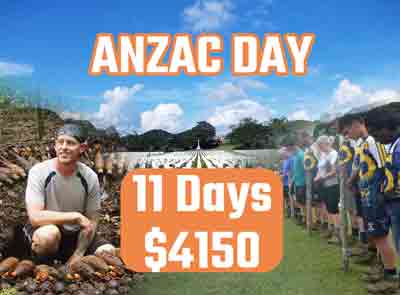Kokoda Trail – Wartime and Peacetime History of the Kokoda Track
Introduction
The Kokoda Track, a renowned hiking trail in Papua New Guinea, holds significant historical importance, particularly due to its role in World War II. This article aims to provide prospective trekkers with a comprehensive understanding of the wartime and peacetime history of the Kokoda Trail, exploring its connections to Australia and Papua New Guinea.
The Kokoda Track in World War II
Background and Significance
The Kokoda Track gained prominence during the Kokoda Campaign in 1942. This rugged and challenging trail served as a critical battleground where Australian forces resisted the Japanese advance towards Port Moresby.
July 1942: Japanese Invasion
In July 1942, Japanese forces landed in Papua, aiming to capture Port Moresby. The Kokoda Track became a strategic route for both Australian and Japanese troops as they clashed in a series of battles along its challenging terrain.
Battle of Kokoda
The Battle of Kokoda, a pivotal moment in the campaign, unfolded in November 1942. Australian troops, part of the 39th Australian Infantry Battalion and the Papuan Infantry Battalion, engaged Japanese forces in intense combat along the Kokoda Track. The campaign played a crucial role in halting the Japanese advance and turning the tide of the war in the Pacific.
Australian Forces and Kokoda
The Australian Infantry, including the Second Australian Imperial Force, demonstrated remarkable resilience and courage during the Kokoda Campaign. The Royal Australian Air Force and the Royal Australian Navy also played crucial roles in supporting ground forces.
Challenges Faced
The Kokoda Campaign presented immense challenges for both sides. The harsh conditions, tropical diseases, and the unforgiving terrain made the campaign one of the most gruelling experiences for the soldiers involved.
Kokoda Trail Campaign – A Pivotal Moment
The Kokoda Campaign was a pivotal moment not only in Australian military history but also in the overall war in the Pacific. The campaign marked the first time the Japanese invasion force was halted, preventing the capture of Port Moresby.
Kokoda’s Strategic Importance
The significance of Kokoda lays in its strategic location. Control of the trail meant control over the supply route to Port Moresby, a key Allied base in northern Australia. The campaign’s success ensured the protection of vital positions and set the stage for subsequent Allied offensives.
Post-War Era: Non-Wartime Uses of the Kokoda Track
Tourism and Village Supplies
In the post-war era, the Kokoda Track took on a new role as a hiking destination. The challenging trail attracted trekkers seeking adventure and a connection to history. Additionally, the trail became a means for transporting essential supplies to remote villages.
Kokoda’s Transformation
The transformation of the Kokoda Track from a wartime battleground to a trekking destination highlights the resilience and adaptability of the region. Today, trekking Kokoda is not only a physical challenge but also a journey through history. Other events in and outside of Papua New Guinea such as the Kokoda Challenge, have also played a part in continuing an expanding meaning of the Kokoda track.
Memorials and Remembrance
Kokoda Memorials in Australia and PNG
Various Kokoda memorials along the trail pay homage to the sacrifices made during the war. In Australia, the Australian War Memorial stands as a solemn tribute to the servicemen who fought in the Kokoda Campaign. In Papua New Guinea, local memorials honour the bravery of both Australian and Japanese forces.
Conclusion
The Kokoda Track, with its wartime history and peacetime transformation, stands as a symbol of courage, endurance, and resilience. Trekking Kokoda provides a unique opportunity to traverse the same paths where Australian and Japanese forces once clashed, offering trekkers a profound connection to history. As you embark on your journey along the Kokoda Trail, remember the sacrifices of those who came before, and appreciate the beauty of a region that has transformed from a wartime battlefield to a symbol of peace and unity.




